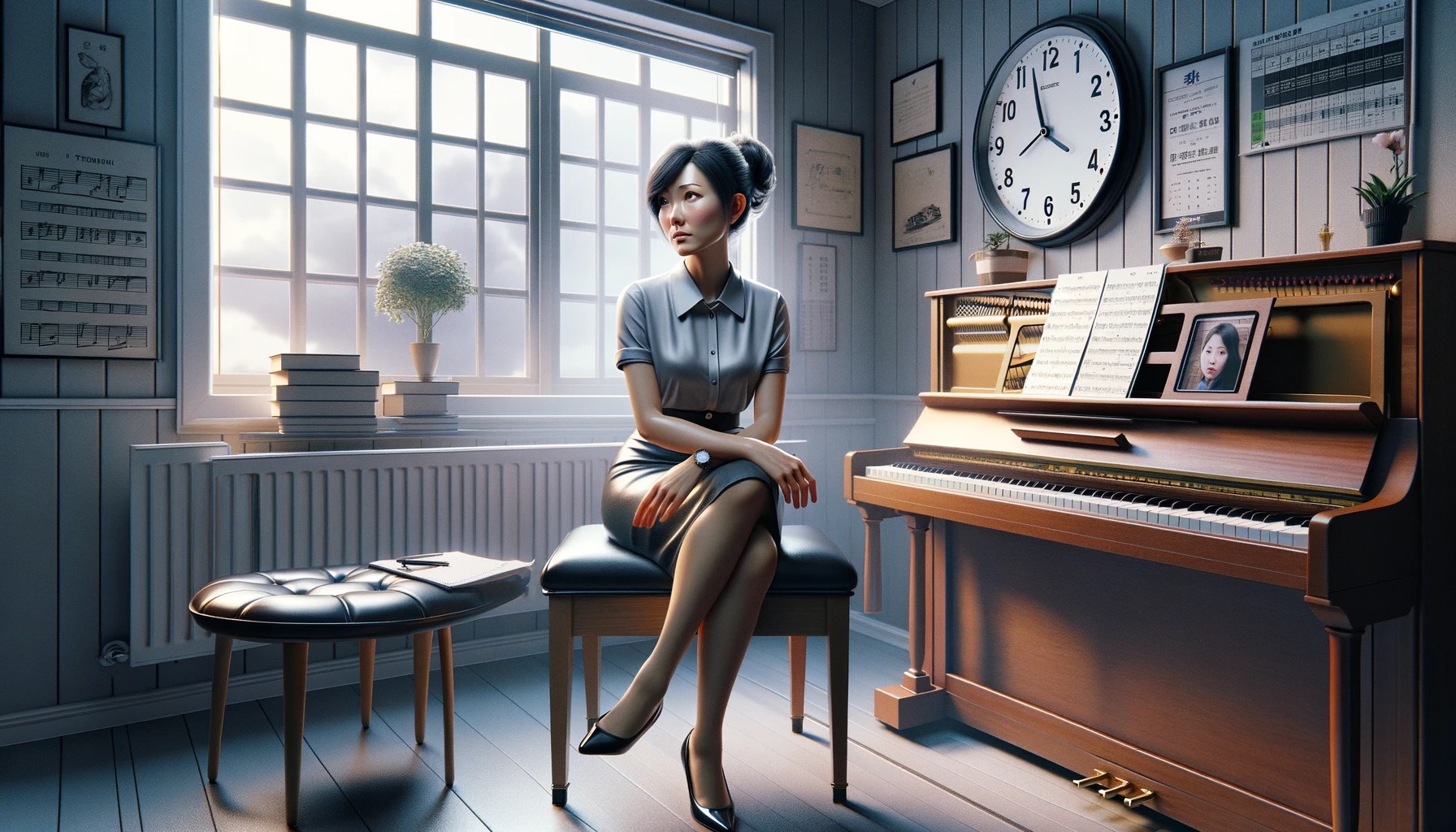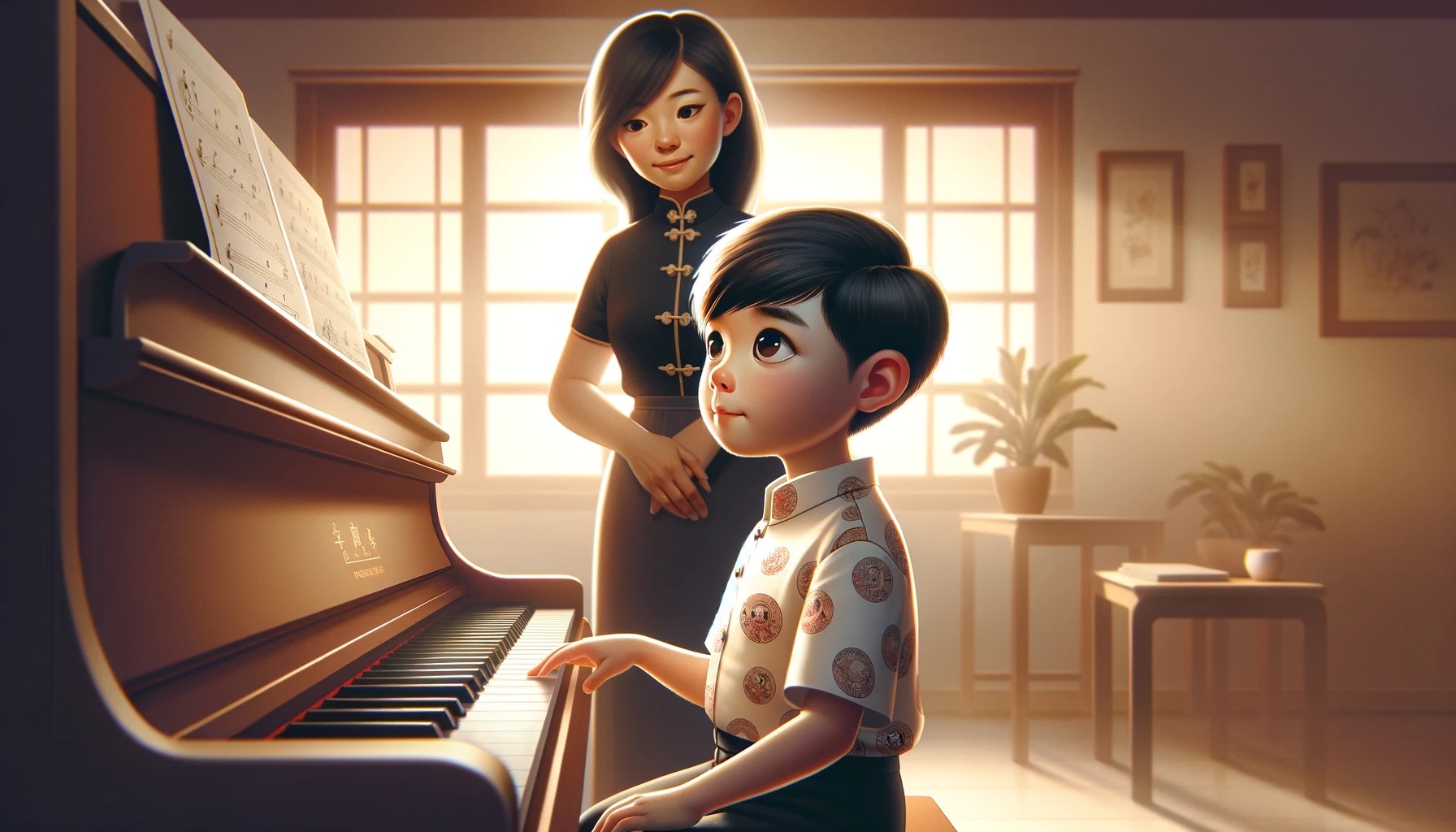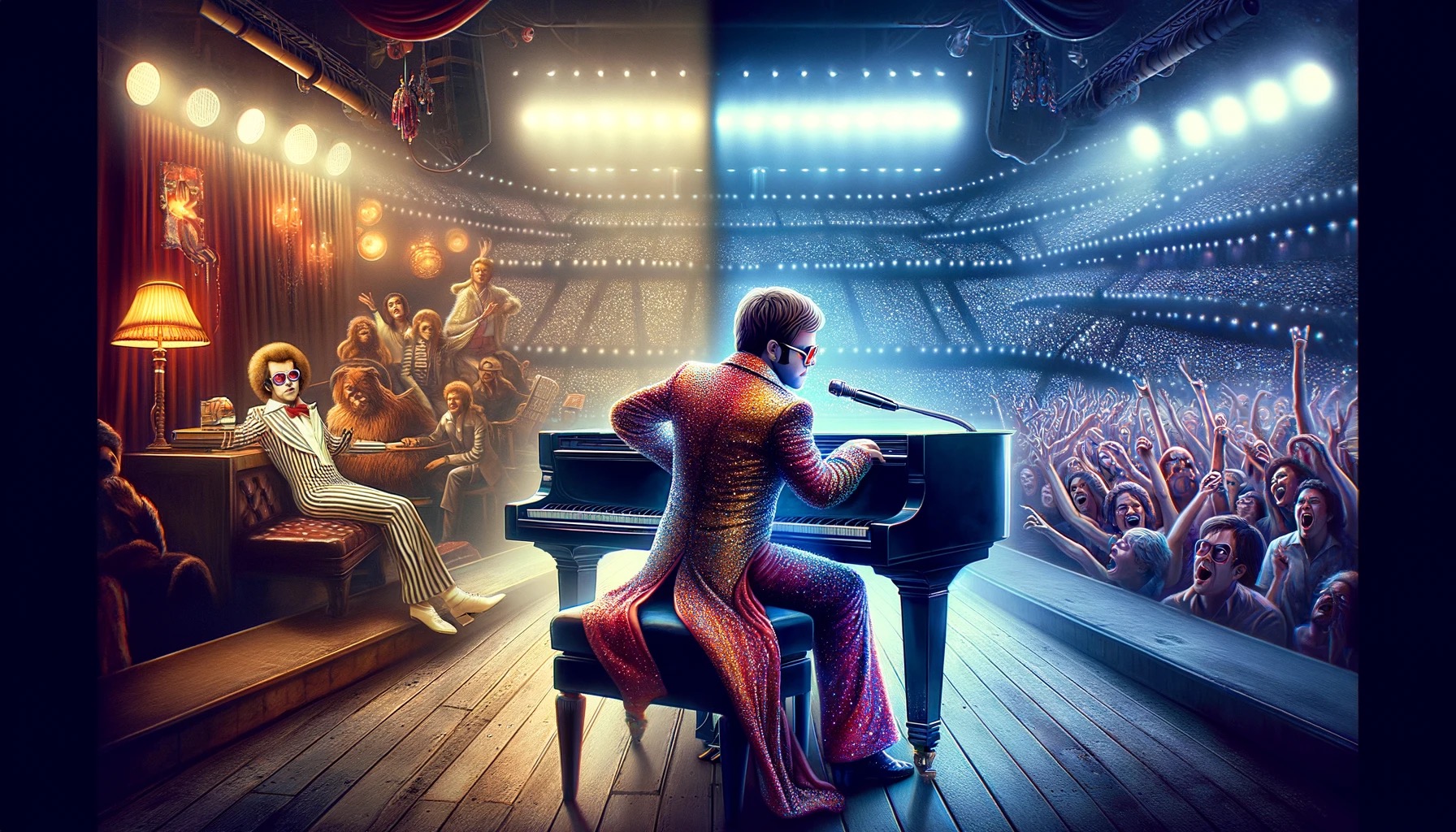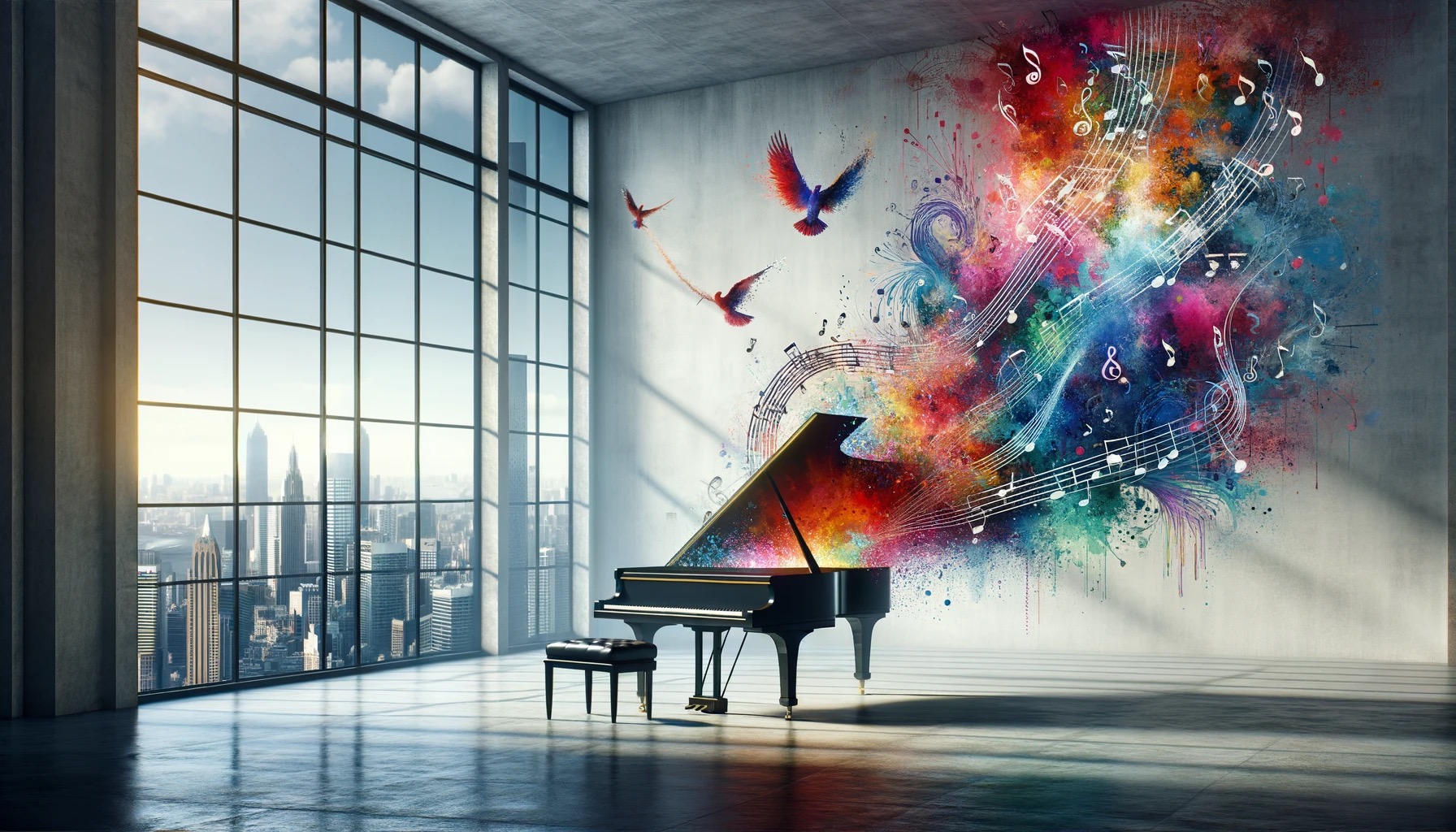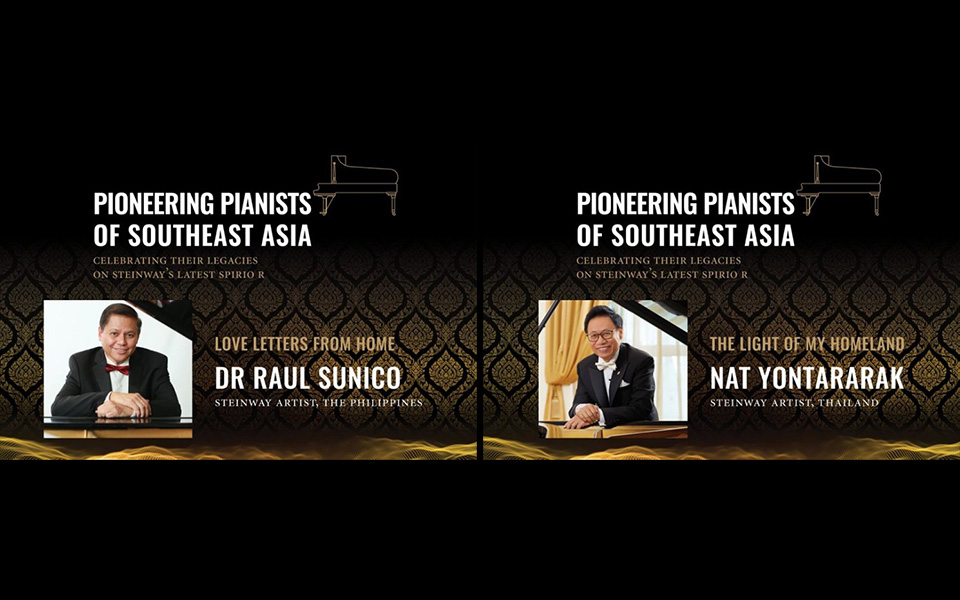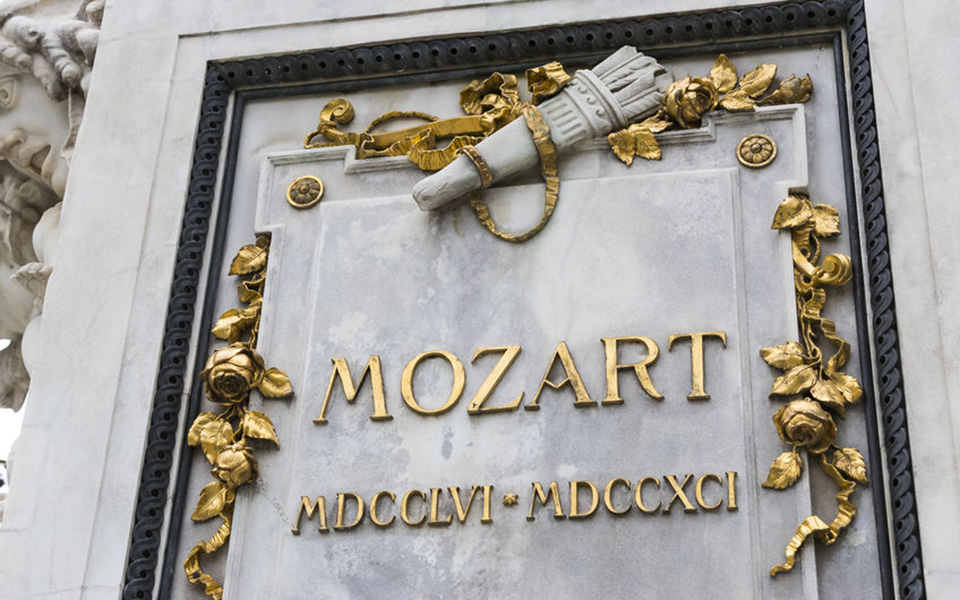Picture a cosy living room, resonating with the sound of a piano, where each note tells a story. In this setting, children are the stars, and their performances on the piano become a showcase of their musical journeys. It's a scene that reveals not just their skills but also hints at their happiness and fulfillment in learning music. This brings us to an intriguing debate in the realm of music education: Is it more beneficial to excel at playing one piece at 90% perfection or to have a broader ability at 40%?
Recently, I can't help but feel a mix of frustration and disappointment. I'm a full time piano teacher, and today I want to talk about a recent challenge I've faced with a parent of one of my students, Fanny, and her son, Daniel. Fanny recently approached me with a complaint that left me quite perplexed. She claimed that I've been cutting Daniel's lessons short on several occasions. This accusation not only caught me off guard but also made me reflect on the various scenarios that I regularly encounter while teaching.
The journey to mastering the piano is as unique as the individual embarking on it. For aspiring pianists, three primary learning paths present themselves: enrolling in a music school, seeking guidance from a private teacher, or embracing self-taught methods such as online courses, YouTube tutorials, and the Synthesia method. Each path offers distinct advantages and challenges, shaping the musical journey in profound ways.
Embarking on the musical journey of learning the piano can be a thrilling and enriching experience for children. However, as a parent, it's essential to discern whether your child is genuinely ready to start this adventure. Knowing the right time to begin piano lessons can set the stage for a lifelong love of music and learning.
Picture this: a vibrant, flamboyant figure seated at a grand piano, fingers dancing across the keys, igniting the air with melodies that transcend time. This is Elton John, a name synonymous with electrifying piano performances that have captivated audiences worldwide. From the dimly lit clubs of 1960s London to the sprawling stadiums of today, Sir Elton John's journey with the piano is not just a musical odyssey but a kaleidoscope of cultural evolution. We'll embark on a whimsical tour through the decades, exploring how Elton's piano playing has not only shaped his music but also transformed the very essence of live performances.
As I sit down to write this latest entry in my blog, I find myself reflecting on the changing tides of piano education. I'm Mia, a piano teacher who has weathered the ups and downs of teaching for years, but recently, the challenges seem to be taking a new form. In the golden days of my teaching career, I could be strict. Today's students, or as they're often called, the 'strawberry generation', are a stark contrast.
Welcome to a delightful musical escapade, where we explore the enchanting world of Taylor Swift's piano-driven hits! As we embark on this journey, we're not just talking about songs; we're diving into a sea of stories, emotions, and melodies that have touched millions of hearts. From the tender whispers of "Back to December" to the vibrant chords of "All Too Well," Taylor's piano-based songs are a testament to her extraordinary talent and versatility. So, grab a comfortable seat and a pair of headphones, because we're about to unravel the magic behind these timeless tunes. Let the music play!
When you think of a piano, what comes to mind? Is it the elegant, black-and-white keys dancing under the skilled fingers of a maestro, or the grand, majestic instrument commanding attention in a concert hall? Beyond these delightful images, there's a secret symphony playing—a symphony of influence that the piano has had on various other art forms. From the pirouettes of ballet dancers to the emotional landscapes of films, and even the strokes of a painter's brush, the piano's melodious whispers have been a muse to many. So, let's embark on a whimsical journey to discover how this beloved instrument has not just made music, but also played a pivotal role in shaping other artistic domains!
When it comes to throwing a party that hits all the right notes, there's nothing quite like a piano-themed bash to get the keys jangling with joy. Whether you're celebrating a birthday for a budding Beethoven, a gathering for classical aficionados, or just want to jazz up your usual get-together, this theme is sure to have your guests singing your praises in perfect harmony. So, pull up a piano bench, and let's dive into some forte-fabulous ideas that will make your party as memorable as a Chopin nocturne on a moonlit night.
In the hushed corners of the digital world, a crescendo of classical notes begins to swell. It's not emanating from the grand concert halls of Vienna or the polished wood stages of Carnegie Hall, but from living rooms, basements, and makeshift home studios across the globe. Welcome to the era of online piano competitions, where the sound of music knows no bounds, and the only entry ticket you need is a Wi-Fi connection and a passion for tickling the ivories!
Have you ever wondered what happens when the timeless grandeur of a piano meets the wild imaginations of today's composers? Well, buckle up, because we’re diving into the world of contemporary maestros who are redefining the ivories with a splash of modern mojo!
Today, we’re going to unravel the enduring mystery shrouded beneath the grand (or upright) body of the piano: the pedals. Yes, those shiny levers at your feet aren’t just for show—they are the unsung heroes that add depth and emotion to your playing. So, let’s pedal through this guide with fun and flair!
The journey of tickling the ivories is an enthralling one, filled with highs, lows, and the beautiful notes in between. As a newbie pianist, you’re embarking on a path that will not only teach you the art of creating melodious tunes but will also cultivate virtues like patience, perseverance, and discipline. In this blog, we'll explore how you can develop a practice routine that nurtures your newfound piano passion while emphasizing the art of patience. Let the rhythm of patience be your guiding note as you traverse the keys to melodious success!
Once upon a time, in a land filled with melodious charm, there lived humble heroes known as piano tuners. Their quest? To rid the world of out-of-tune pianos and bring harmony (literally) to the ears of the masses. Our tale unfolds as we peek into the life of a modern-day piano tuner, who embarks on daily adventures with a tuning fork as his sword and a temperament as his shield.
In the dynamic realm of music, the piano has continually evolved, mirroring the technological advancements of each era. From the fortepiano of the 18th century to the modern grand piano, every epoch has witnessed significant advancements in piano technology. The digital age, too, has left its indelible mark on this venerable instrument, giving rise to what is now known as the hybrid piano. Hybrid pianos seamlessly meld the acoustic traditions with digital innovation, epitomizing the convergence of the timeless and the modern.
In the realm of piano education, a perennial debate exists: should the emphasis be placed on classical pieces that have traversed through centuries, or should the spotlight shine on the contemporary pieces reflective of our current epoch? The crux of this debate hinges on a broader question—what serves the budding pianist more? Is it the disciplined technique and historical richness embedded in classical pieces, or the relevance and creative spontaneity found in contemporary music? As we traverse through the corridors of this discussion, we shall explore the unique benefits each domain offers, and ponder upon the golden mean that promises a harmonious blend of tradition and modernity in piano pedagogy.
Pioneering Pianists of Southeast Asia, presented by Steinway Gallery Singapore on June 3 and 4 at Victoria Concert Hall, is a platform that recognises the efforts of a generation of pianists who have established a presence for the region in the international music scene through their pianism and advocacy of cultural heritage through the piano.
We are proud that Pianovers Meetups, a weekly event organised by ThePiano.SG and held at Urban Park @ URA is given coverage in the Draft Master Plan 2019 Exhibition by the Urban Redevelopment Authority (URA). According to the description from URA, Urban Park @ URA is "A driveway turned public park with seating areas and pianos for music performances and weekly gatherings of Pianovers organised by ThePiano.SG."
To celebrate Bach's 334th birthday, on 21 March 2019, IT giant Google released its first AI-powered Doodle, which allows music lovers to input their custom melody. The software, created between Google Magenta and Google PAIR teams, then uses machine learning to harmonise the custom melody into Bach's signature music style.
An exhibition in 2006 showed Mozart's life as lavishly lived with an income that could beat other musicians in the 18th-century Vienna. He earned a whopping 10,000 florins a year! That made him one of the top 5% of the high earners. At this time, you could live an easy and elite life without any hassles. 500 florins a year was just enough!
Who knew that even a simple changing of hands for a used pianos could go wrong? Anna wanted to give her piano away, and was very confident that her piano was definitely in a good condition just before the piano was moved out. A day after Bella received the piano, she took a video showing the defects - several sticky keys and a few broken strings. Who's the culprit - Anna, Bella, or piano mover?
You could be looking to buy a used piano or selling your beloved piano. No matter the case, you’re probably wondering, “what is the current market value of the piano?” To have a good estimate, you will need a piano appraisal. But, what is a piano appraisal? Why do you need one? And how do you get one? Here we have some common questions about this topic and our answers to them! From the reasons why, to the process and tips when getting one, you’ll find all you need to know about piano appraisals.
If you have watched a piano concert or recital, you would have noticed that pianists on stage all sit with their right sides facing the audience. Why are the pianos placed in this position, at a right angle to the audience? Have you ever wondered who set this precedent? Who was the first performer to do this?
This year 2019, we celebrate Bach’s 334th birthday on 21-24 March around the world. And in Singapore, Pianovers Meetup #115 will join in this celebration by having it JS Bach Themed on 24 March, and Pianovers are encouraged to play pieces by Bach.

